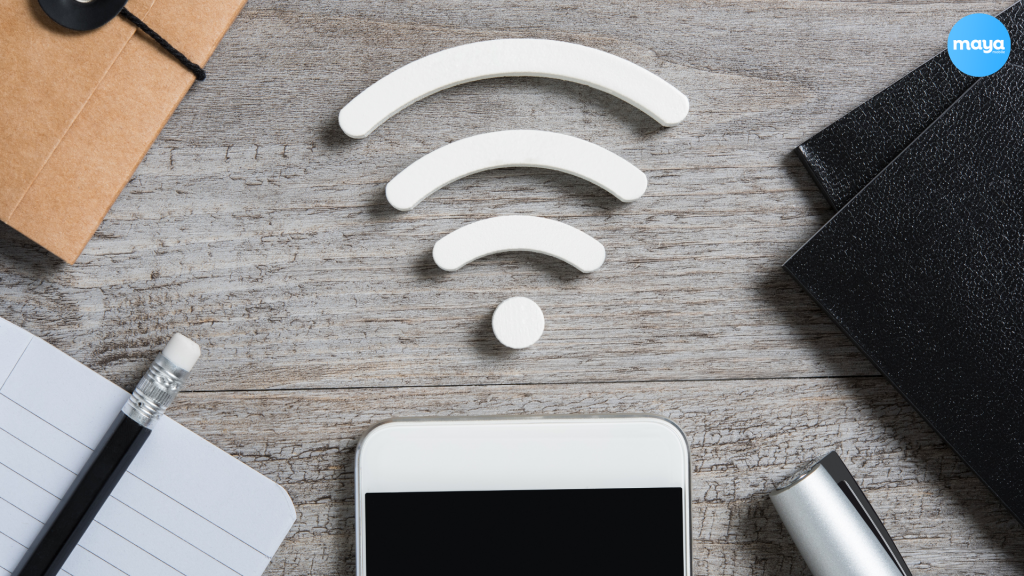You’ve scanned the QR code, followed the steps… and it’s still stuck on “Activating.”
Annoying? Definitely.
Whether you’re switching plans, setting up a second line, or getting ready to travel, eSIMs can take anywhere from a few minutes to a few hours to activate, depending on your phone, carrier, and timing.
This guide breaks down what’s normal, what causes delays, and how to speed things up so you’re not left staring at your screen wondering what went wrong.
How Long Does eSIM Activation Really Take?
The how long does it take to activate eSIM question doesn’t have a single answer because timing varies dramatically based on multiple factors. However, most activations fall into five distinct categories that can help you set realistic expectations.
| Activation Scenario | Typical Time Range | Key Factors | Best Practices |
| Standard Domestic eSIM | 5-30 minutes | Device compatibility, carrier infrastructure | Use stable Wi-Fi, activate during off-peak hours |
| Travel/International eSIM | 2-15 minutes | Provider specialization, automated systems | Activate 24-48 hours before travel |
| Business/Corporate eSIM | 30 minutes – 24+ hours | Verification requirements, approval workflows | Plan ahead, coordinate with the IT team |
| Multiple eSIM Setup | 15-45 minutes total | Sequential activation needed | Stagger by 15-30 minutes between each |
| Weekend/Holiday Activation | 30 minutes – several hours | Reduced support staffing | Avoid if possible, or allow extra time |
Activation time isn’t just technical, it’s situational. Whether you’re activating for personal use, international travel, or enterprise deployment, the process can vary in speed and complexity. Here’s what each scenario actually involves and who it’s best suited for:
Standard Domestic eSIM
This is the most common activation type, used when switching to a new plan, replacing a lost SIM, or activating a new phone on your local carrier. Most devices and networks handle this smoothly.
- Best for: Everyday users switching plans or replacing a SIM on a local network
Travel/International eSIM
One of the biggest benefits of travel eSIMs is how fast they get you connected. Since most are prepaid and run through automated systems, you don’t have to deal with support tickets or long wait times. Just scan, activate, and you’re online perfectly if you’re heading abroad and want to avoid the hassle of buying a SIM at the airport or paying for roaming.
Many international eSIM providers now offer near-instant activation with wide global coverage. It’s worth choosing one that’s known for reliability, especially if you’re traveling through multiple countries or need your connection to work the moment you land.
- Best for: Frequent flyers, remote workers, digital nomads
| Pro tip: Activate these 24–48 hours before departure to avoid any last-minute surprises. |
Business/Corporate eSIM
Unlike consumer plans, business eSIMs often require internal IT verification, corporate account approval, or mobile device management (MDM) compliance, all of which can slow things down.
- Best for: Enterprise users, corporate fleets, managed devices
Multiple eSIM Setup
Many users today run more than one eSIM for work, travel, or testing. However, activating them too quickly in succession can confuse your device or overload the provisioning system.
- Best for: Dual SIM users, international travelers, reviewers, or testers
Weekend or Holiday Activation
Activating during off-hours can be hit or miss. Automated systems may work fine, but carriers with manual verification or limited staffing could leave you waiting longer than expected.
- Best for: Flexible users or those activating with automated providers
What Actually Happens During eSIM Activation
Activating an eSIM may seem as simple as scanning a QR code, but behind the scenes, your phone and carrier go through a handshake that involves multiple steps. If any part of that chain breaks or stalls, you’ll likely get stuck on “Activating…”
Step-by-Step: How eSIM Activation Works
1. Profile Download
Your phone contacts the carrier’s server to download your personal eSIM profile. This includes your mobile number, plan, and network permissions.
What can delay this?
- Expired or reused QR codes
- Poor internet connection
- Server overload (especially during travel season or holidays)
Tip: Always use strong, stable Wi-Fi when activating.
2. Identity Check & Account Validation
The carrier verifies your account and ensures it’s eligible for activation. This often includes checking:
- Payment status
- SIM lock status
- Carrier compatibility
If you’re activating a corporate line, this step may include manual approval from IT.
3. Network Registration
Your phone connects to nearby towers and tries to log into the mobile network using your new eSIM.
Common slowdowns here:
- Weak signal in your area
- Roaming compatibility issues
- Congested networks (airports, events)
Even if the profile loads, your phone won’t get data or call access until this step is complete.
4. Final Activation
If everything works, the status changes to “Activated” and your phone can make calls, send texts, and use data via the new eSIM.
iPhone vs. Android: What’s Different About Activating eSIM?
iPhone (Especially iPhone 14 and Newer)
iPhones generally handle eSIM activation faster and more smoothly. Apple’s newer models are fully eSIM-native, meaning no physical SIM slot is required at all.
Why it’s often quicker:
- Optimized eSIM hardware and software
- Fewer compatibility issues with global carriers
- Built-in tools like “Convert to eSIM” for seamless transfer
| Pro tip: If you’re switching from one iPhone to another, use the “Transfer eSIM” option in iOS Settings → Cellular. It’s fast and usually skips the QR code step entirely. |
Android (Varies by Brand and Model)
Android eSIM activation can take longer and behave differently depending on the manufacturer (Samsung, Google Pixel, OnePlus, etc.).
Potential slowdowns:
- Different UI for adding eSIMs (varies by brand)
- Some models require reboot after activation
- Carrier menu options may be buried deeper in Settings
| Pro tip: Always make sure your Android OS is fully updated before starting, and if you’re using dual SIMs, disable the other one during setup to avoid confusion. |
eSIM activation is a short process when everything works. But because it depends on both your phone and your carrier’s systems, things can go wrong at multiple steps. Knowing what’s actually happening helps you spot problems quicker, especially when stuck on “Activating…”
3 Major Factors That Control Your eSIM Activation Speed
eSIM activation might seem like a simple scan-and-go process, but several behind-the-scenes factors can drastically affect how fast your connection goes live. Understanding these can help you plan smarter and avoid frustrating delays.
1. Your Device Plays a Bigger Role Than You Think
Not all eSIM-compatible devices activate at the same speed.
- iPhones (especially iPhone 14 and newer) are typically faster due to optimized eSIM processors and native support for multiple profiles.
- Some Android devices, depending on brand and model, may require extra authentication steps, causing slower activations.
- eSIM chip hardware varies across devices; newer chips allow faster downloads and more efficient network registration.
- Software version matters; outdated OS versions may lack the latest eSIM protocols, leading to compatibility issues.
- If you have multiple active eSIMs, the system may take longer to prioritize and assign profiles correctly.
| Tip: Always update your OS before activating a new eSIM to ensure the smoothest experience. |
2. Carrier Infrastructure Is the Make-or-Break Factor
Your carrier’s backend setup can significantly influence activation speed.
- Digital-first providers are built for speed and usually activate within minutes.
- Traditional carriers with legacy systems might have slower provisioning workflows, sometimes placing eSIM requests in traffic queues.
- Server congestion during peak hours or big promotions can lead to activation delays.
- Server geography matters; providers with globally distributed servers respond faster than those with centralized systems.
| That’s why international eSIMs often activate faster than domestic ones tied to older infrastructures. |
3. Timing: Why Activating at 3 AM Might Be Faster
Believe it or not, when you activate, it can impact how fast your eSIM connects.
- Activations during off-peak hours (late night or early morning) are often quicker due to lower server traffic.
- Peak times, like 4-8 PM local time, tend to experience the most delays.
- Weekend activation may also be slower if your carrier requires manual verification and has reduced support staff.
- Time zone mismatches can affect activation, too. Activating during your carrier’s business hours tends to yield better results.
- Scheduled maintenance windows can temporarily slow things down, but usually improve performance afterward.
| Tip: Plan your eSIM setup outside of peak hours, especially before travel, to avoid last-minute surprises. |
eSIM activation speed depends on more than just your device; it’s a combination of hardware, software, carrier infrastructure, and network timing. Knowing these variables puts you one step ahead, whether you’re activating from home or on the tarmac.
Pre-Activation Tips for Faster eSIM Setup
Getting your eSIM to activate smoothly often comes down to preparation. Follow these quick tips to avoid delays and glitches:
1. Check Device Compatibility First
- Make sure your phone supports eSIM and works with your specific carrier.
- Use an unlocked device if possible – they usually activate faster.
- Double-check your model against the carrier’s compatibility list.
- Regional versions of the same phone may have different eSIM support.
2. Use a Strong & Stable Internet Connection
- Wi-Fi is preferred – but it must be stable (no drops or switching).
- Avoid public/hotel Wi-Fi with firewalls – they can block activation.
- Personal hotspot or home Wi-Fi is your safest bet.
- Don’t switch between mobile and Wi-Fi mid-activation.
3. Time Your Activation Smartly
- Activate during your carrier’s off-peak hours (early morning is best).
- Avoid weekends or holidays if your carrier requires manual verification.
- Consider the carrier’s local timezone (especially for international eSIMs).
- Watch out for large sales/promos – server load can cause delays.
Troubleshooting Common Activation Delays
Even with solid preparation, eSIM activation can sometimes stall. Here’s how to diagnose and fix common issues efficiently without wasting hours on support calls.
1. When Your QR Code Isn’t Working
Invalid or corrupted QR codes are a top reason for activation failures. Here’s how to troubleshoot:
- Double-check the code: Make sure it hasn’t expired and hasn’t been used on another device.
- Watch for scanning issues: Shadows, glare, or poor lighting can prevent proper scanning.
- Single-use codes: Many carriers restrict QR codes to one activation attempt. If it’s already been used, request a new one.
- Avoid screenshots or email images: Compression during screenshots or email transmission can corrupt QR data. Always access the original code via your carrier’s app or secure portal.
| Rule of thumb: If your device is stuck on “Activating eSIM” for more than 15 minutes, escalate to carrier support for deeper troubleshooting. |
2. The Restart Strategy That Actually Works
Restarting alone often isn’t enough. Use this smarter reset sequence instead:
- Turn on Airplane Mode and wait 10 seconds.
- Restart your device while Airplane Mode is still on.
- Let the device boot fully and reconnect to Wi-Fi before checking activation status.
| Avoid tapping into settings immediately after reboot, background processes may still be completing the setup. |
If this doesn’t work:
- Remove the eSIM profile and re-add it using the original QR code (if still valid).
- This clears any corrupted provisioning data from the first attempt.
3. When to Call Support (and What to Say)
If activation goes well beyond the carrier’s stated timeline usually 15–30 minutes it’s time to contact support. Here’s how to make that call effective:
- Use the right language: Ask about your “provisioning status” and “network registration” instead of saying “it’s not working.”
- Have device info ready: Include model, OS version, and any error messages.
- Track your activation timeline: Keep notes and screenshots if you need to escalate or seek compensation later.
| Pro tip: Don’t wait endlessly. If a carrier promises 15-minute activation and it’s been over 30 minutes, reach out proactively. |
Advanced Users: Watch for Multi-eSIM Conflicts
If you’re managing multiple eSIMs, activation can fail due to profile conflicts or assignment issues. Disable other profiles during setup, and ensure your device assigns the new eSIM correctly for data, voice, and SMS.
A few smart troubleshooting steps like using original QR codes, resetting network flow properly, and knowing when to call can save hours of frustration. Treat eSIM activation like a process, not a one-click setup, and you’ll avoid most of the common pitfalls.
Advanced eSIM Activation Scenarios Most People Miss
Not all eSIM setups are simple. If you’re dealing with multiple lines, travel plans, or business accounts, these tips can help you avoid activation headaches.
Multiple eSIM Activation Strategy
Running two or more eSIMs on one device? Here’s how to avoid crashes and failed activations:
- Stagger each activation by 15–30 minutes
- Avoid activating two eSIMs at the same time it can confuse your phone or the carrier’s system
- Always activate your most important line (primary number) first
- Test each line individually before adding the next. Check for calls, texts, and data
Some phones limit how many profiles can be installed or activated at once, so spacing them out reduces the risk of conflict.
Travel eSIM Activation Timing Tips
Getting ready to go abroad? Don’t wait until the airport to set up your travel eSIM:
- Activate 24–48 hours before your flight, while you still have strong Wi-Fi
- Test the eSIM at home by temporarily switching to it and confirming data works
- Check billing terms: some plans start charging on activation, others only when used abroad
- Avoid activating over an unstable airport or airplane Wi-Fi it may interrupt the download
Business & Corporate Line Considerations
Setting up eSIMs for work? There’s often more red tape. Here’s how to stay ahead:
- Some corporate lines require extra steps, like IT approval or MDM (mobile device management) validation
- Activations may take several hours or overnight, especially during off-hours
- Confirm with your IT team if your account needs manual approval before activating
- If activating multiple business lines, follow your company’s sequence to avoid conflicts
Your eSIM Activation Timeline Decoded
So, how long does eSIM activation really take?
Anywhere from a few minutes to a few hours, depending on your device, carrier, and timing. But now that you understand the behind-the-scenes process and how to prepare, you’re far less likely to be caught off guard.
The key is preparation: verify compatibility, update your software, and activate during off-peak hours. And if things do go sideways, you’ve got the troubleshooting tools to handle it like a pro.
If you’re looking for a fast, reliable activation experience, especially for international travel, Maya Mobile is a solid choice. Their eSIMs typically activate within 2–5 minutes, with global coverage and user-friendly setup.
eSIMs are the future of mobile connectivity. With the right provider and setup, yours will activate quickly and keep you connected wherever you go.
Related reads:
Travel Smart: How eSIM Transforms Data Roaming
eSIM 5G Compatibility: Which Phones and Carriers Work?
Common Questions About How Long Does It Take to Activate eSIM
Understanding the most frequent concerns about eSIM activation helps you prepare for potential issues and manage expectations effectively.
1. Can I use my phone while my eSIM is activating?
Yes, you can use your device normally during eSIM activation, including accessing apps, making calls on existing lines, and browsing the internet. The activation process runs in the background and won’t interfere with other functions. However, avoid making changes to cellular settings or installing other carrier profiles until the current activation completes to prevent conflicts.
2. What happens if my eSIM activation fails halfway through?
Failed activations typically leave your device in a safe state without affecting existing functionality. The incomplete eSIM profile is automatically removed, allowing you to retry activation. Wait 10-15 minutes before attempting again, as immediate retries can trigger carrier security protocols that temporarily block your device from activation attempts.
3. Do international eSIMs activate faster than domestic ones?
Travel and international eSIM providers often activate faster, typically within 2-10 minutes, because they’ve built streamlined, automated systems specifically for quick deployment. Domestic carriers may have more verification steps and legacy infrastructure that can slow the process, though major carriers are increasingly matching international eSIM speeds through system upgrades.
4. Can network congestion during peak hours significantly delay my eSIM activation?
Yes, network congestion can add 15-60 minutes to activation times, especially during peak usage hours, typically between 4-8 PM local time. Carrier authentication servers prioritize active customer traffic over new activations during busy periods. For time-sensitive activations, try during off-peak hours like early morning or late evening when server loads are lighter.
5. Is there a difference in activation speed between switching carriers and adding a new line?
Adding a new eSIM line to an existing account typically activates faster, usually within 5-15 minutes, than switching carriers, which requires number porting and can take 2-24 hours. The porting process involves coordination between your old and new carriers, adding verification steps that don’t exist with simple line additions to current accounts.
6. Why do some eSIM QR codes expire, and how does this affect activation timing?
eSIM QR codes contain temporary authentication tokens that expire for security reasons, typically within 7-30 days, depending on the carrier. Expired codes won’t activate and require requesting a new QR code from your carrier, which can add 24-48 hours to your timeline. Always check expiration dates and activate promptly after receiving your QR code to avoid delays.




